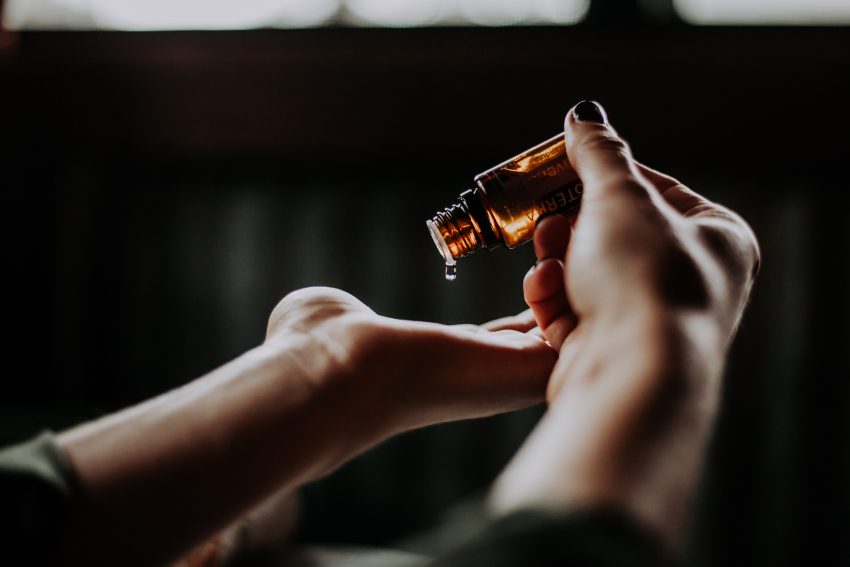Can we use essential oils during pregnancy? And if so, which are they?
Most women during pregnancy feel intense stress. The use of aromatherapy, as well as the use of essential oils, could help in her psychological support and empowerment.
During all three trimesters of pregnancy, women may experience pain, nausea, sleeplessness, anxiety, and depression. Medications are usually contraindicated during pregnancy as they may interfere with the baby’s development. Complementary and alternative therapies such as massage therapy, essential oils, and herbs can offer natural relief.
Essential oils in addition to a wonderful aroma have many beneficial properties. They improve physical and mental health, provide peace of mind, reduce stress as well as help and improve our daily mood. Especially during pregnancy if you are interested in getting started, it is recommended to start after the first trimester of pregnancy and especially after the 12th week of pregnancy.
The main concern is the risk that the constituents of essential oils will penetrate the placenta. However, the transfer of organic compounds to the placenta does not necessarily pose a risk to the fetus. The decisive factor is the effect of these compounds. After all, the fetus receives the nutrients necessary for its development through the foods consumed by its mother.
According to Walls, 2009 “Essential oils, after entering the body through the skin or the nose, evoke the sense of smell which, in turn, stimulates the limbic system of the brain where emotion and memory are processed”
Also, essential oils can be administered topically during the massage or applied to the skin directly, through inhalation (through diffusers or via oil placed on cotton ball or fabric), or through hydrotherapy (full, foot or sitz bath). Smith, Collins, and Crowther (2011) report that essential oils enhance the natural body’s production of its own chemicals of sedation, stimulation, and relaxation.
We need to inform also that some essential oils are considered toxic, while others can cause irritation or side effects on our skin. For these reasons, they should not be used during pregnancy without the consent of a specialist and never identical to body products. In this case, we make clear that every essential oil in a bottle is 50-100 times more concentrated than in a plant and this is why we need to be very careful while using them. For those reasons, because they are highly concentrated, they are meant to be mixed with a basic oil, but also we need to mention that the properties of some essential oils can change when they are blended with other oils.
According to Tisserand and Balacs, the following essential oils should not be used during pregnancy: wormwood, rue, oakmoss, oakmoss, Lavandula stoechas, camphor, parsley seed, sage and hyssop (hyssop).
The following diluted essential oils appear to be safe during pregnancy: bergamot (bergamot), black pepper, chamomile (German and Roman chamomile), clary sage (sage), cypress, eucalyptus ), frankincense (incense), geranium (geranium), ginger (ginger), grapefruit (grapefruit), juniper (juniper), lavender (lavender), lemon (lemon), mandarin (tangerine), sweet marjoram (sweet marjoram), neroli (neroli), petitgrain (rose leaves), rose (rose), sandalwood (sandalwood), sweet orange (tea orange), tea tree, ylang-ylang.
Some of the essential oils that can be used during pregnancy and their properties:
• Genuine lavender: acne and pimples, stress, sores.
• Chamomile Roman: itching, redness, pimples
• HoWood or Rosewood: wrinkles, damaged skin, loss of elasticity.
• Petite Grange Nerangi: pimples, dilated pores, wrinkles, stress.
• Orange: stress, luster, bulimia.
• Lemon: pimples, skin impurities, slimming and firm skin.
• Grapefruit: slimming, lose weight, skin loose
• Mandarin: insomnia, stress.
• Patchouli: heavy calves and aches
Burns et al. conducted a study of 22 women in Italy to compare the effectiveness of one essential oil to another for pain relief during labor and delivery. Each woman was offered a choice of one of five essential oils: “Roman chamomile (Chamaemelum Nobile), clary sage (Salvia sclarea), frankincense (Boswellia carteri), lavender and mandarin (citrus reticulate)”. The women who used aromatherapy had a reduced perception of pain, but there were no differences in intrapartum events, length of labor, or Apgar scores between the essential oil group and the control group.
Ylang-ylang oil has been used in childbirth in women of particular concern to help them relax. Also, jasmine oil dissolved in concentrated oil soothes calming and helps childbirth. Administration of essential oil of rose plum with inhalations and foot baths improves childbirth, and in particular a significant difference during the second stage of delivery where it has been shown to decrease its delivery time.
The oils are separated into natural or basic oils and essential oils. The basics are used alone or dissolved in these essential oils. Some of the essential oils, which contain vitamins A, B, F, and D are: Sweet almond oil, avocado, jojoba, calendula, grape seed oil.
The oil we use must be 100% pure oil, preferably organic and concentrated, as this preserves its therapeutic properties. Throughout the pregnancy, we can use all other types of oils.
- Grape oil, oil for all uses and all skin types.
- Almond oil, ideal for itchy skin.
- Avocado oil, rich in vitamins A, B and D. Fit very dry skin and oily areas. It is best to dilute it with another oil because it can be quite hot.
- The wheat germ is very thick and should be diluted (10% dilution) with a thinner oil such as grape. Rich in Vitamin E, good for dry skin.
- The oil that came from the peach and apricot kernel. Oils like almond oil but more expensive.
- GLA (Gamma Linoleic Acid) rich night flower very good for dry skin and premature aging. Thick enough so it should be diluted 10%
- Olive oil, similar to almond oil but with a stronger odor.
Cold-pressed oils are proven therapeutic, have important biological activity. Unlike commercial refiners that have virtually no advantage other than the attractive price. A few drops of cold-pressed oil are sufficient for effective action, e.g. rosebushes for stretch marks.
However, we avoid black cumin oil during pregnancy and do not sunbathe when using Hypericum perforatum oil.
The most important cold-pressed oils in pregnancy are:
Rosebush: Massage the belly from the beginning of pregnancy, buttocks, and chest to help the skin withstand changes and tensions.
Argan: successive with rosehip for hydration and elasticity of the skin.
Calendula: for irritation, itching or massage oil.
Jojoba: for skincare, it does for all skin types.
However, aromatherapy with careful selection of essential oils could help in the psychological support of the woman, who feels very vulnerable during pregnancy. Aromatherapy works on the central nervous system, relieving anxiety, reducing stress, relaxing, stimulating, restoring the physical and mental well-being of women.
Some recommended applications are:
1) 2 drops of lavender essential oil (Lavandula angustifolia) in bath water can relieve stress.
2) The diffusion of Cardamom essential oil (2-3 drops) provides relief from nausea.
3) Gentle rubbing with citrus ectoparasite essential oils by a skilled person can help with back pain, back pain and stress.
- Burns, E , Zobbi, V., Panzeri, D., Oskrochi, R., & Regalia, A. (2007). Aromatherapy in childbirth: A pilot randomized controlled trial. International Journal of Obstetrics & Gynaecology, 114(7), 838-844
- Walls, D. (2009). Herbs and natural therapies for pregnancy, birth, and breastfeeding. International Journal of Childbirth Education, 24(2), 29-37
- Gentz A.Brenda, MD, “Alternative therapies for the management of pain in labor and delivery”, Clinical Obstetrics and Gynecology, Volume 44(4), 704- 732, December 2001



